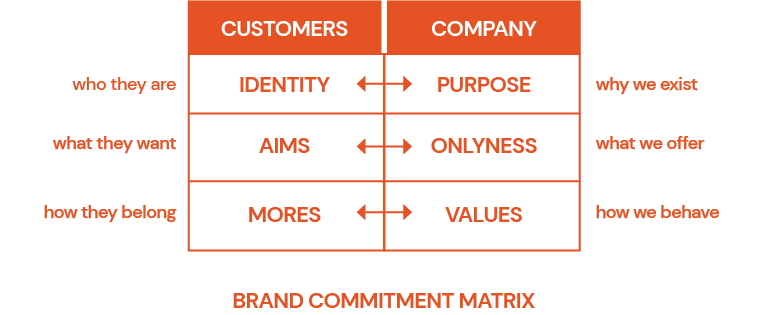Does Empathy Belong in Branding? Part II
The idea of empathy is not a new one, but its definition has changed over time. In this blog post, we will be looking at the concept of empathy in brand strategy, determining whether it should be given as much focus as the world seems to demand and the role it plays in building a connection with customers.
Before you go all-in with empathy.
Whether you consider the different types of empathy as a glidepath to deeper connections with your audience or as a tool for understanding what your consumer needs, it’s important to begin with knowing the difference between branding and marketing.
Branding is a complex process that helps organizations articulate who they are so that each of their stakeholders, from business partners to employees to customers, can understand and connect in a meaningful way. Establishing that connection occurs through relatable stories and shared feelings. On the other hand, marketing is how brands communicate. It’s typically driven by statistics and data, which inform the brand but do not lead it.
According to Harvard Professor Gerald Zaltman, it’s our subconscious–not our rational mind– that leads our purchasing decisions. He goes on to express that as much as 95% of purchasing decisions are fueled by emotion. As rebranding experts we often say that in the battle between your heart and mind, your heart will win a majority of the time. It’s the experience and emotional connection brands create that outweigh any number and even logic.
Why is everyone talking about empathetic marketing?
Search “empathy in branding” and you’re more likely to find countless articles and blogs arguing for empathy in marketing. As brand experts, this is both perplexing and frustrating. While marketing has its place in your overall strategy, tying the concept of empathy at the marketing level is risky business.
Consider this: marketing is how businesses promote, or dare we say sell, their services or products to an audience. Agencies have spent countless hours conducting surveys and focus groups, sampling clients’ products and much more to better understand consumer behavior, their needs and their wants. While the intention is to connect the dots between product to buyer, there’s a gray area in how it’s done. Are businesses using real empathy–driven by the consumer–to establish a connection or are they using the guise of empathy to persuade consumers to feel what they want them to feel?
At its core, marketing is focused on conversions. It’s short-term campaigns that are driven by statistics and data in order to prove the activities in the plan are effective. You might argue that empathy lives in the creative concept or messaging delivered through the ad or other tactic. But, it really stems from the brand.
Why aren’t more people talking about empathy in branding?
In approaching the topic of empathy and whether or not it belongs in branding, we’ll be honest, the answer was no. A business seeing the world through their customers’ eyes and creating its brand to reflect the experience goes against everything we teach. Branding and empathy can only be aligned when an organization builds its strategy from the inside out.
Branding is a marathon. It’s committing to a belief, embracing the experience and working like hell to share the journey with like-minded people. The process for establishing your brand begins by taking a close look at who you really are as an organization. Brands express themselves more honestly when they clearly identify their purpose, values, culture and position. These foundational elements to your brand strategy cannot come from the wants and feelings of the audience; they have to come from leadership and the core reasons why the business exists in the first place.
Branding uses personality, messaging and visual cues to engage and inspire others to share in the experience. When an organization commits to living their story, it attracts employees and customers who share similar values and want similar outcomes. The only way to bring empathy into branding is to create human experiences that bridge the gap between the business and its audience. This isn’t accomplished in a postcard or email; it’s through more intimate touch points where people can interact with and exist within the brand. It’s in moments where both brand and audience are experiencing their shared values and beliefs in a collaborative way.
It’s possible the only way empathy and branding can really coexist is through intentional use of the Brand Commitment Matrix.
So, does empathy belong in branding?
Only if the brand is built on its own truth, and the experience it creates is based on a shared journey with its customers. By humanizing the brand and inviting the audience to play an active role, only then can deeper connections be formed.
At pivotal moments, rebranding is the most effective way for leaders to signal significant change. Are you at a pivotal moment? Drop us a line, and we'll be in touch.


